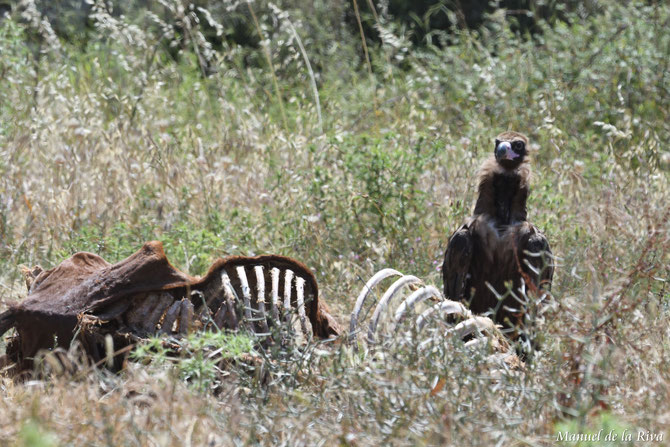
We know that vultures forage over large areas, but what do birds from an island population do? In the case of the Cinereous Vulture female XCP from Mallorca, she took a tour around the island.
Following Cinereous Vultures in Mallorca

The Cinereous Vulture XCP is a female in her third year according to EURING 7 that recently toured around the island. Dr Ainara Cortes Avizada tagged her in 2019 with a GPS transmitter provided by us here at the Vulture Conservation Foundation (VCF). Ainara is developing a research line focusing on the islands as ecological and socioeconomic models, and she is researching the consequences of the arrival of the Griffon Vulture to Mallorca on both the scavenger guild and the social perception by local stakeholders. In total, the VCF has provided six GPS tags to monitor the vultures on the island, including Griffon Vultures that colonised Mallorca in 2008. With the help of GPS transmitters, we will be able to track the movements of vultures and better understand their behaviour. Monitoring the vultures will also help conservationists on the ground to predict conflicts regarding socio-economic activities such as livestock and act accordingly.
Cinereous Vultures in Mallorca
The Cinereous Vulture population in Mallorca has suffered a dramatic decline due to many threats, and in the 80s it reached a new low, with 20 birds remaining. Thankfully, over the last four decades, their population multiplied by 10 as the Fundació Vida Silvestre Mediterrània and the Servei de Protecció d’Espêcies-GOIB estimate that there are around 200 Cinereous Vultures on the island, including approximately 35 breeding pairs nesting in the Serra de Tramuntana. Several factors contributed to this increase that has been happening throughout the last decades, namely the control of the use of poisons, the provision of food for the vultures, the establishment of good practices in the local livestock farms, and the protection of nests to avoid disturbance.
Sign up to our newsletter and never miss any vulture news!



